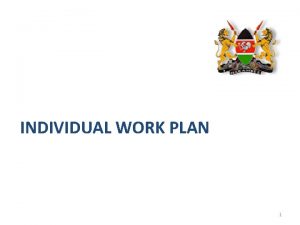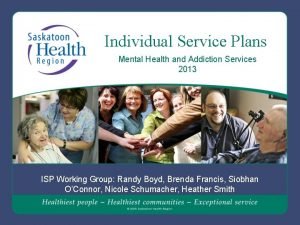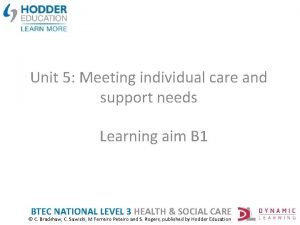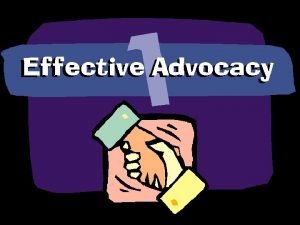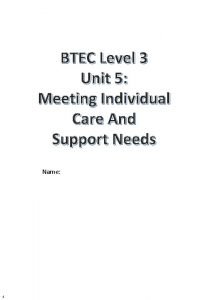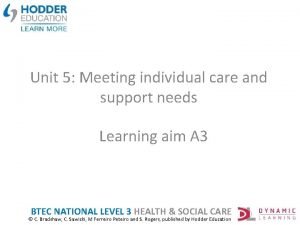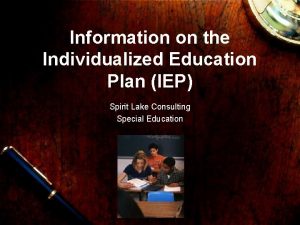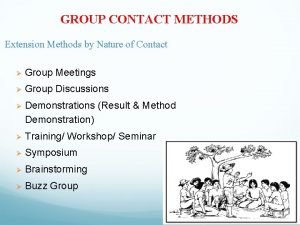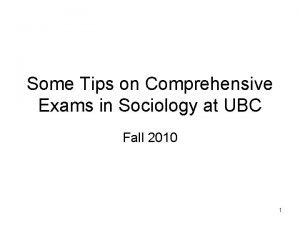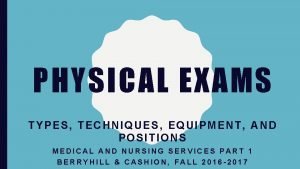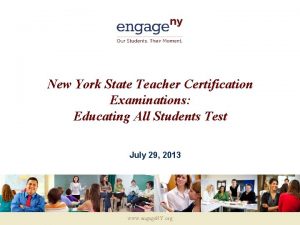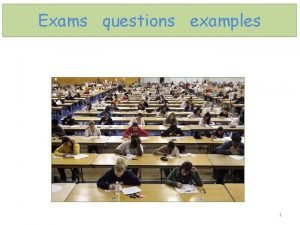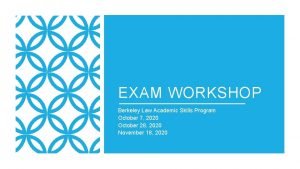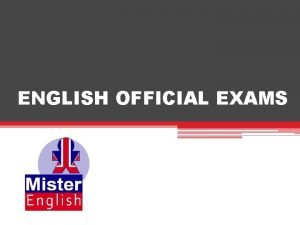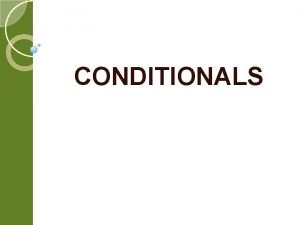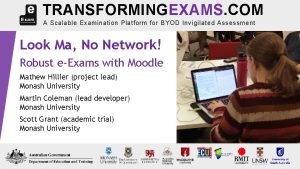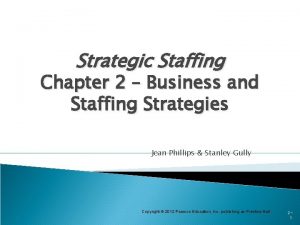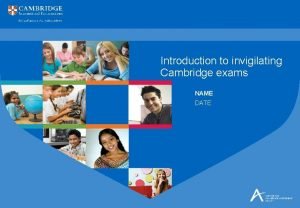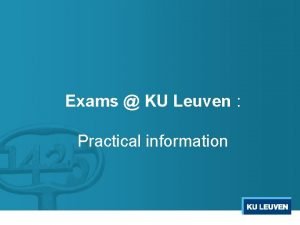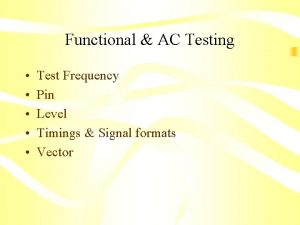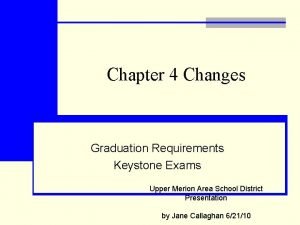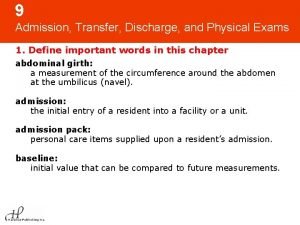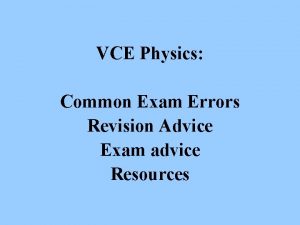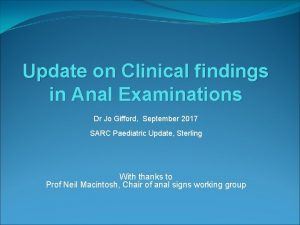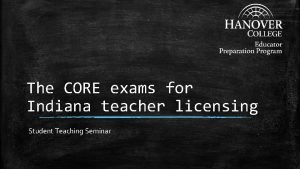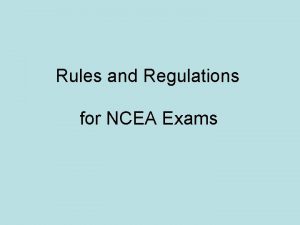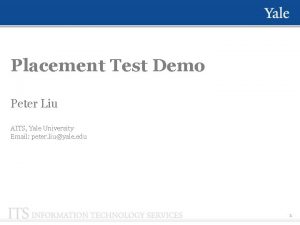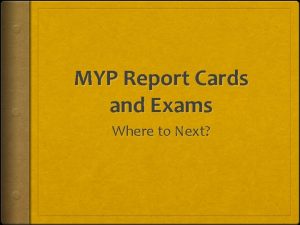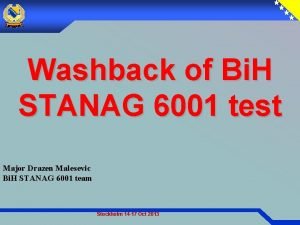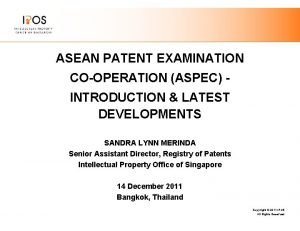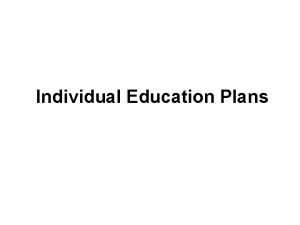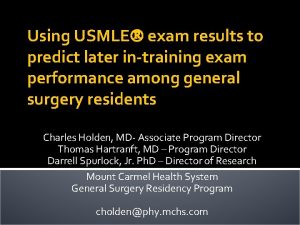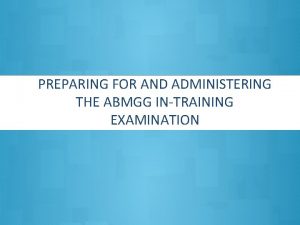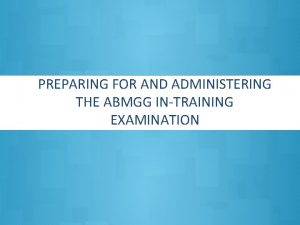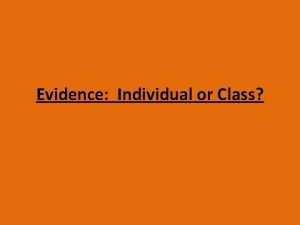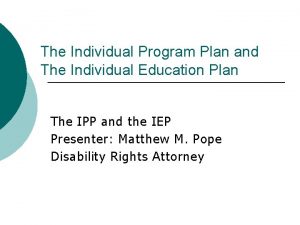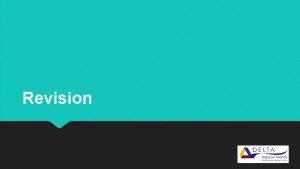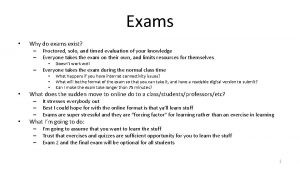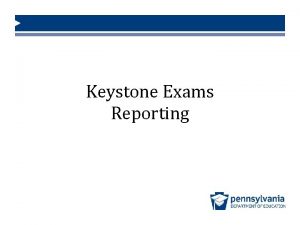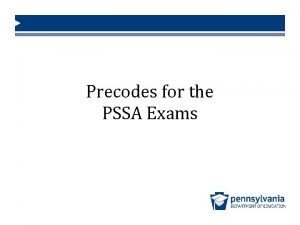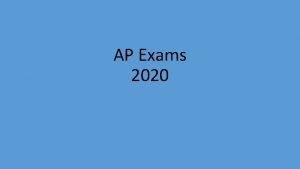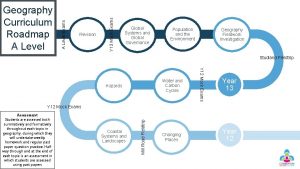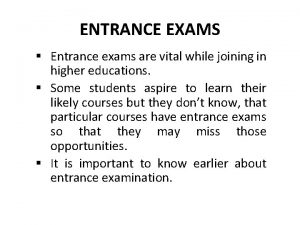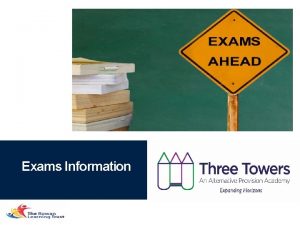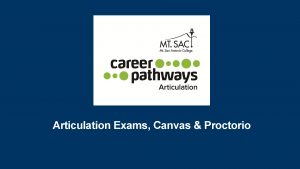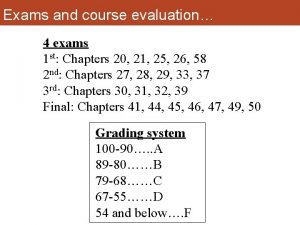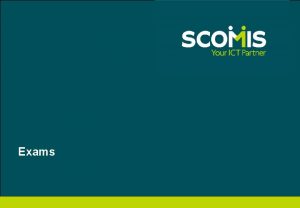Program Support for InTraining Exams Individual Education Plans




















































- Slides: 52

Program Support for In-Training Exams: Individual Education Plans and OSCEs Kelli Christensen, MD – Idaho State University Family Medicine Residency, Pocatello, ID A. J. Weinhold, MD – Idaho State University Family Medicine Residency, Pocatello, ID Laila Siddiqui, MD – Community Health Care Family Medicine Residency, Tacoma, WA Shannon Waterman, MD – Swedish Family Medicine Cherry Hill, Seattle, WA January 3, 2018 Family Medicine Residency Network - Webinar

ABFM ITE – What is it? Shannon U Waterman, MD Swedish Family Medicine Cherry Hill Seattle, WA January 3, 2018

In Training Exam (ITE) • • 240 questions Internet-based, last week of October Annual “practice” exam Identify knowledge gaps • Milestones: Medical Knowledge https: //www. theabfm. org/cert/ite. aspx


In Training Exam (ITE) • No “Passing Score” • Bayesian Score Predictor – how likely to pass certification exam https: //cbas. theabfm. org/Bayesian. Prediction. aspx • Residents show gains each year of residency • Biggest gain between years 1 and 2




In Training Exam (ITE) Intended to show progress • Mean growth – PGY 1 to PGY 2 was 52 points – PGY 2 to PGY 3 was 34 points – PGY 3 to initial certification was 27 points. • Very good sensitivity and positive predictive value. – – Sensitivity. 91 Specificity. 47 Positive predictive value. 96 Negative predictive value were. 27 (Fam Med 2015; 47(5): 349 -56. )

In Training Exam (ITE) After ITE, resident (or program) can download a document from resident Physician Portfolio containing answers and critiques for all questions.

Academic Individual Educational Plans Kelli Christensen, M. D. & A. J. Weinhold M. D. Idaho State University Family Medicine Residency January 3, 2018

Academic Assessment at ISUFMR • • Mock ITE during orientation OSCE Annual ITE Ongoing rotation & clinic evaluations

History of Academic Remediation at ISUFMR • • Individual and personal Punishment for the advisor Struggling for appropriate resources Perceived as punitive to the resident

Audience Question… • What sort of intervention do you currently have for a struggling learner? (may choose more than one) • Standardized IEP (Medical Knowledge Enhancement Plan) • Individualized/Ad hoc Study Plan • None • Other (free text)

Goals For Developing An Academic IEP • • • Create a standardized process Reduce advisor workload – why reinvent the wheel? Create standardization of intervention intensity Allow standardized tracking of individual and residency progress Allow us to track impact on ITE scores

Methods of Development • Reached out to other FMRs (why reinvent the wheel? ) • AFMRD listserv for resources • Reviewed plans from 8 programs, identified 4 that seemed to be within reach from our existing academic assessment structure • Shared amongst faculty at faculty meeting then held 2 faculty development hours to develop ISU FMR’s IEP using those 4 plans as templates

Tool For Intervention • • Purpose Procedure Intensity of Plan Specs Outline of Plans Definition of Compliance Resources Agreement

Moderate MKEP: R 1 score > 280 < 330 (85 -90% chance of passing boards) R 2 score > 330 < 380 (83 -89% chance of passing boards) R 3 score > 380 < 410 (85 -89% chance of passing boards) Review your ITE results. Log on to the ABFM website. You will need your username & password. Review your board score, z-score, and ITE questions (highlighted questions are the ones that are incorrect). o Focus your study in the content areas where you had difficulty. After in-training exam, meet with faculty advisor to develop MKEP (required portions of MKEP listed below). Meet monthly with faculty advisor and review MKEP progress. Read TWICE MONTHLY AFP journal and complete each quiz (2 per month). o Log on to the AAFP website: www. aafp. org. or the AAFP app o You must use your own username and password to obtain access to the site and appropriate CME credit. If you do not remember your username and password, contact AAFP at 800 -274 -2237. o Sign in to AFP quizzes: AFP CME Quizzes o Report CME from quiz completion on your AAFP CME site. Complete 10 board review questions weekly; choose topic areas for board questions based on performance on ITE and focus on areas where performance was suboptimal. o Log on to the AAFP website: www. aafp. org or the AAFP app o You must use your own username and password to obtain access to the site and appropriate CME credit. If you do not remember your username and password, contact AAFP at 800 -274 -2237. o Sign into the Sample Board Questions. AAFP Sample Board Review Questions After you complete the board review section you have selected, it will automatically score, have answer explanations, and will list your completion on your CME tracker. o See resources below for URL. Take screen shots from AAFP website or app upon completion of each section to review with faculty advisor and file in resident file.

Intensive MKEP: R 1 score < 280 (<85% chance of passing boards) R 2 score < 330 (<83% chance of passing boards) R 3 score < 380 (<85% chance of passing boards) Review your ITE results. Log on to the ABFM website. You will need your username & password. Review your board score, z-score, and ITE questions (highlighted questions are the ones that are incorrect). o Focus your study in the content areas where you had difficulty. After in-training exam, meet with faculty advisor to develop MKEP (required portions of MKEP listed below). Meet monthly with faculty advisor and review MKEP progress. Read TWICE MONTHLY AFP journal and complete each quiz (2 per month – one current and one from 2 years prior). o Log on to the AAFP website: www. aafp. org. o You must use your own username and password to obtain access to the site and appropriate CME credit. If you do not remember your username and password, contact AAFP at 800 -274 -2237. o Sign in to AFP quizzes: AFP CME Quizzes o Report CME from quiz completion on your AAFP CME site. Complete 20 board review questions WEEKLY (10 from AAFP, 10 from ABFM); choose topic areas for board questions based on performance on ITE and focus on areas where performance was suboptimal. o Log on to the AAFP website: www. aafp. org o You must use your own username and password to obtain access to the site and appropriate CME credit. If you do not remember your username and password, contact AAFP at 800 -274 -2237. o Sign into the Sample Board Questions. AAFP Sample Board Review Questions Login using your AAFP # and select: “go to review questions” After you complete the board review section you have selected, it will automatically score, have answer explanations, and will list your completion on your CME tracker. o See resources below for URL. Take screen shots from AAFP website or app upon completion of each section to review with faculty advisor and file in resident file. Must complete The FP Comprehensive ™: a board preparation tool and family medicine reference. The complete CD review must be completed before the next ITE (October, 2018). o A program copy can be checked out from Renee Thompson, ISU FMR Assistant Coordinator. o An individual copy may be purchased through this link: AAFP FP Comprehensive ™ o Provide proof of completion of the FP Comprehesive ™ by submitting completed practice tests (17 total) to faculty advisor quarterly (4 due each quarter with 5 due last quarter prior to next ITE). Compliance is reviewed at quarterly resident review.

Process For Intervention • Present the IEP to all residents as a potential study guide for those who wish • Intern meets with advisor to review mock ITE performance and is notified of scoring criteria for possible intervention, again notified of study guide • Based on ITE scores, administration will automatically notify resident and advisor of moderate or intensive ITE status and schedule monthly advising meetings • Initial 2 hour long advising meeting to discuss ITE, learning styles, implementation process/plan • Monthly advising meeting to check on progress through IEP

Trial of IEP Intervention • • Older adult learner 2016 ITE score 270 Identified in evaluations with poor fund of medical knowledge Intensive IEP implemented

Lessons Learned • Having a resident with insight into his learning style • Lack of tracking of resident progress on AAFB and ABFM question bank apps (screen shots to document compliance) • A need to protect study time to some degree

Did it help? 500 450 Index Resident Scores 400 Moderate Intervention 350 Intensive Intervention 300 250 2016 ITE 2017 ITE

Further Tweaking… • Prior to the 2017 ITE we sent out an email with the IEP to all residents and faculty: this provoked anxiety, residents took offense, and residents criticized our motives. There was also misunderstanding about the relationship between scores and national averages. • We assessed this again at faculty meeting • We formally presented national and ISUFMR trends in ITE scores to identify our need to intervene • Adjusting benchmarks and intervention lines based on ABFM Bayesian Score Predictor – defensible and standardized. Explained the nature of a scaled test. • Benchmark goal 93 -95% predicted pass, moderate 90%, intensive 85% • Renaming, as some found IEP pejorative – Medical Knowledge Enhancement Plan

Audience Question… • Do you perceive that your program needs to implement a standardized IEP?

Need For Intervention? • While we have a 100% boards pass rate for over 5 years, we could have been helping our residents earlier • It is about more than just passing boards

Need for intervention by our current guidelines 100% 90% 80% 70% 60% 50% 40% 30% 20% 10% 0% R 1 R 2 2011 R 3 R 1 R 2 2012 R 3 R 1 R 2 R 3 R 1 2013 No Intervention R 2 R 3 2014 Moderate R 1 R 2 2015 Intensive R 3 R 1 R 2 2016 R 3 R 1 R 2 2017 R 3

Audience Question… • What do you perceive to be barriers to implementing a standardized intervention in your program? (type a response)

Ease of Administrative Implementation

Next Steps • Add a Learning Styles questionnaire to implementation notification email for review at initial advisor meeting. • Codify administrative implementation. • Determine a method for tracking our own compliance with intervention. • Should we implement a mid-year mock ITE for residents participating in interventions to track progress?

Questions? • Kelli Christensen, M. D. chrikell@isu. edu • A. J. Weinhold, M. D. weinana@isu. edu

OSCEs for Interns: An assessment of Baseline Knowledge Laila F. Siddiqui, MD Community Health Care Family Medicine Residency Tacoma, WA January 3, 2018

About CHC Tacoma • • 6/6/6 program Teaching Health Center/FQHC Urban underserved population Graduated 1 st class in 2017

Why do OSCEs, anyway? • Newer programs, like ours, have a history of getting “pioneers” as interns, who have a variety of backgrounds with their medical education. It is important for their future advisors to have an idea of where the intern’s baseline skill set and knowledge is. OSCEs can also show potential areas for improvement that the advisor may want to pay closer attention to throughout residency training.

Evidence-Based • There is good evidence that using OSCEs and resident self evaluation is beneficial in assessing baseline skills • Dong T 1, Zahn C 2, Saguil A 3, Swygert KA 4, Yoon M 5, Servey J 6, Durning S 7. The Associations Between Clerkship Objective Structured Clinical Examination (OSCE) Grades and Subsequent Performance. Teach Learn Med. 2017 Mar 2: 1 -6. • Schleicher I 1, Leitner K 2, Juenger J 3, Moeltner A 4, Ruesseler M 5, Bender B 6, Sterz J 7, Stibane T 8, Koenig S 9, Frankenhauser S 10, Kreuder JG 11. Does quantity ensure quality? Standardized OSCE-stations for outcome-oriented evaluation of practical skills at different medical faculties. Ann Anat. 2017 Jul; 212: 55 -60

ACGME required V. A. 2. b) The program must: V. A. 2. b). (1) provide objective assessments of competence in patient care and procedural skills, medical knowledge, practice-based learning and improvement, interpersonal and communication skills, professionalism, and systems-based practice based on the specialty-specific Milestones; (Core) V. A. 2. b). (1). (a) This assessment must involve direct observation of resident-patient encounters. (Detail) V. A. 2. b). (1). (b) Each resident should be assessed in each of the six competency areas on entrance into the program.

Topic Choices • Relevant to our program – OB and pediatrics heavy curriculum – Urban underserved population • Trouble with these areas with previous classes • Low ITE scores in topic areas globally • Wide variety of topics to attempt to reflect full spectrum training

Sample Scenario • A 58 y/o male reports to the ER with chest pain. 30 pack year smoker with elevated blood pressure, but no official diagnosis of HTN. • FHx: Diabetes, father with CAD s/p CABG • Vitals: BP 185/98, HR: 108, RR: 18, T: 99 F Sa. O 2: 98% – How should this patient be evaluated?

Sample Template

Results (Chest Pain) • Intern #1: Ok overall. Needed prompting for cardiac risk factors. • Intern #2: Met expectations, no corrections • Intern #3: met expectations. Needed some prompting with office tx of angina, but done correctly. • Intern #4: No issues, can clearly identify emergent problems in adult medicine easily • Intern #5: adequate performance, met expectations • Intern #6: met expectations. Can adequately identify adult emergent problems and triage to ED

Scenario #2 • 32 YO G 3 P 3 Female at 6 week postpartum visit reports feeling overwhelmed and fatigued. She is sleeping poorly and has little appetite. The FOB is in jail again and she has little family around to help her. She asks for help. She sometimes has thoughts of getting in her car and driving away. – How should this patient be evaluated? – What are the next steps in management?

Depression Template

Results (Depression) • Intern #1: Marginal pass overall. Did not expand on differential, did well with MDD as diagnosis • Intern #2: Met expectations. Needed guidance for other signs of MDD (reading topic) • Intern #3: non-pass overall. Meets expectations with MDD, but needed coaching and showed lack of experience with PPD. Did not do exam or discuss what needed to be done. • Intern #4: Non-pass overall, due to inability to diagnose post-partum depression or ask relevant questions pertaining to this topic. Tended to use judgmental language, and did not do an appropriate (or any) physical exam. • Intern #5: Non pass overall. Appears that the issues were with the post-partum section of this case, but was closer to the mark for MDD. • Intern #6: Non-pass overall. Global improvement needed.

Scenario #3 • A 58 y/o female reports to the clinic for a well woman exam. She has no chronic medical conditions. She has not seen a doctor for 10 years. • What are the recommendations for her? • She reports that she cannot afford the appropriate screenings -what now? • She is also a current every day smoker who would like to quit.

Well Woman Template

Results (Preventative Health) Intern #1: Met expectations overall, with prompting Intern #2: Did well overall Intern #3: Met expectations, needed prompting with some guidelines Intern #4: Needs improvement in knowing standard of care guidelines and current recommendations. Will need overall guidance in how to look up resources. • Intern #5: Adequate, but needed a lot of prompting Needs more guidance in how to use preventative care guidelines (USPSTF, etc). • Intern #6: Adequate. As previously, needs guidance for community resources. Needed significant prompting for all preventative measures • •

2017 ITE Results • Our program separates residents into “zones” to best assess the degree of medical knowledge intervention needed • Intern #2 green, Intern #5 red, Intern #6 yellow – Green zone: >440 – Yellow zone: 350 -420 – Red zone: <340

Selected Conclusions • Intern #2: Only intern who successfully passed all 6 OSCE stations. Also did well in hospital, OMM, and clinic baselines. Did not start the academic year with an IEP. Currently doing well with commendations on rotations. • The OSCE evaluations gave the advisor and the CCC a strong idea that this would not be a resident in difficulty for the coming academic year.

Selected Conclusions • Intern #5: Passed 2 of the 6 OSCE stations, needing significant prompting on 1 station, and was given a non-pass on 3 stations. • Passed OMM baseline, but non-pass on hospital and clinic baselines • Advisor and CCC cautioned that this would be a resident with possible struggles, so advisor started the year with additional meetings and a reading plan for the year • So far, has had adequate performance on almost all hospital rotations • Recent ITE score in red zone will prompt an official IEP for the remainder of the academic year.

Selected Conclusions • Intern #6: Non-pass on 2 stations, adequate performance on the other 4. • Passed clinical and OMM baselines, was given a marginal pass on hospital baseline • No initial learning plan in place. • Yellow zone on ITE with marginal pass on some hospital rotations, now has IEP for the rest of the year based on CCC recommendations.

Acknowledgements • Brian Veauthier, MD (University of Wyoming Family Medicine Residency-Casper) • Nancy Stevens, MD • Ardis Davis and Marcia Mc. Guire

Questions and Discussion Kelli Christensen, MD – Idaho State University Family Medicine Residency, Pocatello, ID A. J. Weinhold, MD – Idaho State University Family Medicine Residency, Pocatello, ID Laila Siddiqui, MD – Community Health Care Family Medicine Residency, Tacoma, WA Shannon Waterman, MD – Swedish Family Medicine Cherry Hill, Seattle, WA
 Individual workplan
Individual workplan Individual incentive plans advantages and disadvantages
Individual incentive plans advantages and disadvantages Individual service plan mental health example
Individual service plan mental health example Azure developer support
Azure developer support Unit 5 meeting individual care and support needs
Unit 5 meeting individual care and support needs Speaks or acts in support of an individual or cause
Speaks or acts in support of an individual or cause Unit 5 health and social care assignment
Unit 5 health and social care assignment Unit 5 meeting individual care and support needs
Unit 5 meeting individual care and support needs Major details
Major details Individual education plan
Individual education plan Advantages of result demonstration
Advantages of result demonstration Poem structure and form
Poem structure and form Finland exams
Finland exams Adit classroom training
Adit classroom training Comprehensive exams
Comprehensive exams St joseph of cupertino prayer for examinations
St joseph of cupertino prayer for examinations Prayers for exam results
Prayers for exam results Types of physical exams
Types of physical exams New york state teacher certification exams
New york state teacher certification exams Exam examples of
Exam examples of Berkeley law exams
Berkeley law exams English official exams
English official exams Ashley began her banking career as a teller
Ashley began her banking career as a teller Complete the sentences if i pass my exams
Complete the sentences if i pass my exams Byod exams
Byod exams 7 components of strategic staffing
7 components of strategic staffing Purdue physics 172 past exams
Purdue physics 172 past exams Peoplecert online proctoring
Peoplecert online proctoring Cambridge exam
Cambridge exam Hrm question paper 2020
Hrm question paper 2020 Ku leuven exam results
Ku leuven exam results Chapter 9 admission transfer discharge and physical exams
Chapter 9 admission transfer discharge and physical exams Exams brunel
Exams brunel Exams actesting
Exams actesting Are the keystone exams mandatory
Are the keystone exams mandatory Admission transfer discharge and physical exams
Admission transfer discharge and physical exams Vce physics resources
Vce physics resources Rcpch exams
Rcpch exams Compassionate consideration uoa
Compassionate consideration uoa Indiana teacher certification practice test
Indiana teacher certification practice test Nzqa digital exams results
Nzqa digital exams results Math placement yale
Math placement yale Decas exams
Decas exams Paragraph about exams
Paragraph about exams Myp report card
Myp report card Ib history exams
Ib history exams Dua to study
Dua to study Stanag 6001 test
Stanag 6001 test Www.awinfosys.com/eassessment/exams sample.htm
Www.awinfosys.com/eassessment/exams sample.htm Aspec exams
Aspec exams Fspos
Fspos Typiska drag för en novell
Typiska drag för en novell Nationell inriktning för artificiell intelligens
Nationell inriktning för artificiell intelligens
